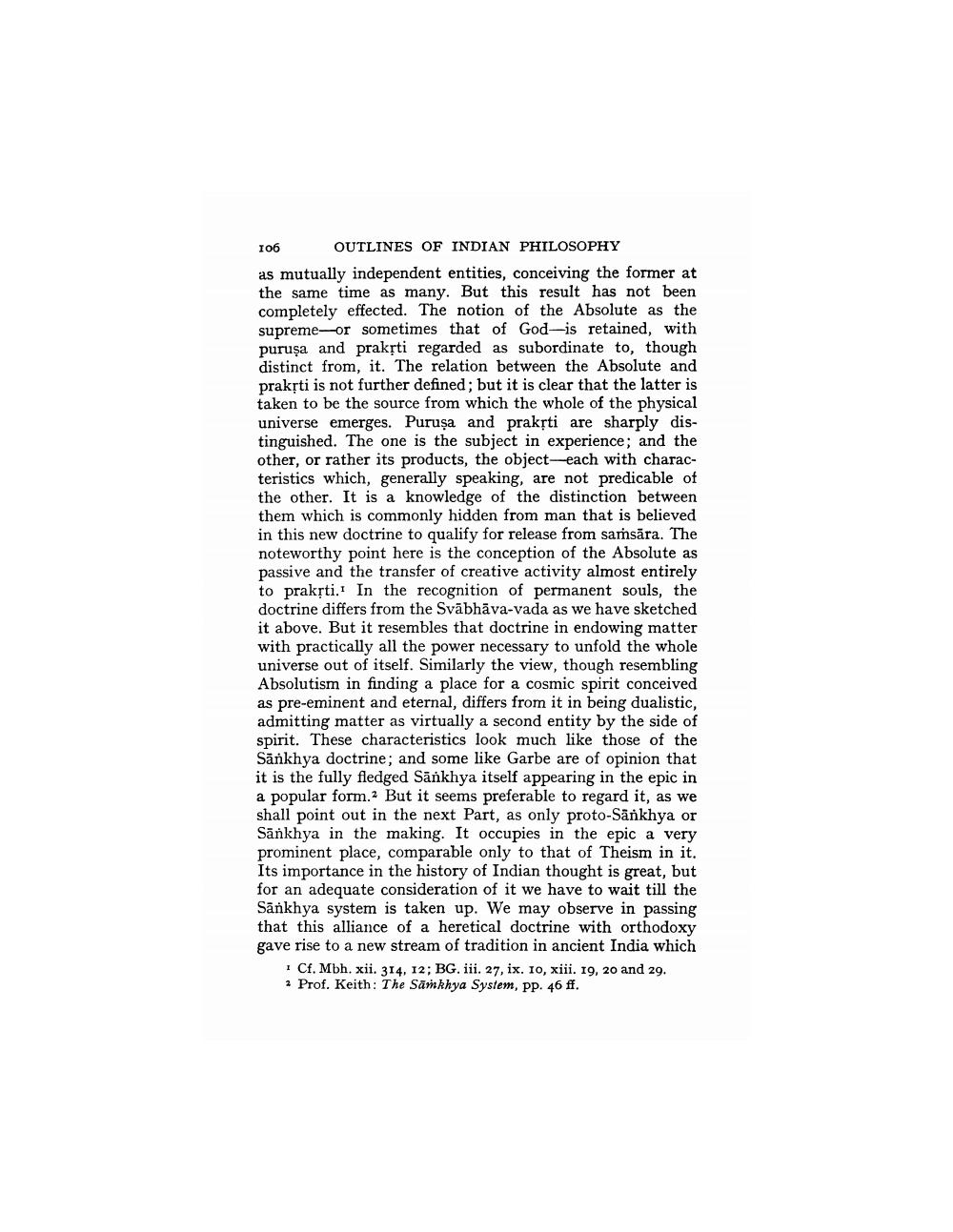________________
106 OUTLINES OF INDIAN PHILOSOPHY as mutually independent entities, conceiving the former at the same time as many. But this result has not been completely effected. The notion of the Absolute as the supreme-or sometimes that of God-is retained, with purusa and praksti regarded as subordinate to, though distinct from, it. The relation between the Absolute and praksti is not further defined; but it is clear that the latter is taken to be the source from which the whole of the physical universe emerges. Puruşa and praksti are sharply distinguished. The one is the subject in experience; and the other, or rather its products, the object-each with characteristics which, generally speaking, are not predicable of the other. It is a knowledge of the distinction between them which is commonly hidden from man that is believed in this new doctrine to qualify for release from samsāra. The noteworthy point here is the conception of the Absolute as passive and the transfer of creative activity almost entirely to praksti. In the recognition of permanent souls, the doctrine differs from the Svābhāva-vada as we have sketched it above. But it resembles that doctrine in endowing matter with practically all the power necessary to unfold the whole universe out of itself. Similarly the view, though resembling Absolutism in finding a place for a cosmic spirit conceived as pre-eminent and eternal, differs from it in being dualistic, admitting matter as virtually a second entity by the side of spirit. These characteristics look much like those of the Sānkhya doctrine, and some like Garbe are of opinion that it is the fully fledged Sānkhya itself appearing in the epic in a popular form. But it seems preferable to regard it, as we shall point out in the next Part, as only proto-Sankhya or Sankhya in the making. It occupies in the epic a very prominent place, comparable only to that of Theism in it. Its importance in the history of Indian thought is great, but for an adequate consideration of it we have to wait till the Sankhya system is taken up. We may observe in passing that this alliance of a heretical doctrine with orthodoxy gave rise to a new stream of tradition in ancient India which
1 Cf. Mbh. xii. 314, 12; BG. iii. 27, ix. 10, xiii. 19, 20 and 29. 2 Prof. Keith: The Sankhya System, pp. 46 ff.




